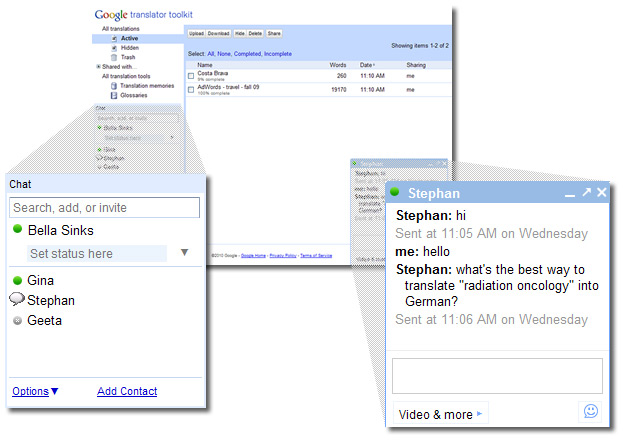In my line of work and as an Asian Studies minor, I come upon a lot of Japanese and Chinese Web sites. Even though I took three years of Japanese, I still rely on the all might Google Translate to get me through most of those Web pages. If it’s bad enough for me, just imagine the headache app developers have to go through when localizing their apps for international markets. Google is here once again to make that task a little easier.
Google has this nifty service called Translator Toolkit. It is, in their words, an “online translation tool for amateur and professional translators.” It’s built on the excellent Google Translate software and is now coming to new file formats including Android resource files.
The Translator Toolkit is coming to four new file formats to be exact. These file formats are Android Resouce (.xml), Application Resource Bundle (.arb), Chrome Extension (.ison), and GNU gettext-based (.po). So, in essence, you should be able to localize a text heavy app like Funny Facts 8000+ into a wide variety of different languages.
The implementation of these new translation tools couldn’t be easier. Google provides a detailed tutorial that explains everything you need to know to get that app into Chinese or any other language you could possibly want. Hit up the res/values directory, upload your .xml file into the Translator Toolkit and the software will do the rest. Of course, with certain languages like Chinese, the translation is a bit rough around the edges. That’s when you hire a real translator to fine tune it in localization.
After this is all said and done, you can export the translated copy into a directory in Android. Google, always the funny one, calls this whole process, “翻译起来太方便了!” It means “Translation is too easy,” which forces me to call into question the software’s definition of easy. I studied the Chinese language for a year alongside Japanese and I learned absolutely nothing. I guess everything’s easy when you’re a computer.
Google has also made some changes to the Translator Toolkit’s user interface to make it more intuitive. These changes include “customized colors” for easy annotation, “number of characters in the segment” for mobile development, and “synchronized scrolling” so users can scroll both the original and translated text at the same time.
Regardless of my failings in trying to learn Asian languages, the new Translator Toolkit should help app developers push their content in more languages than ever before. Now we just need the Translator Toolkit to support true languages like Elven and Klingon, and we’ll be on our way to having the best apps ever populating Google Play.
As an aside, it seems that Memebase shares in the joy of the announcement:






